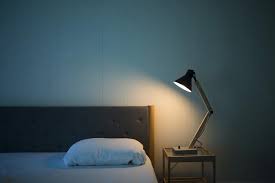According to a new study, those who were exposed to any level of light while sleeping at night were much more likely to be obese, have high blood pressure, and have diabetes than adults who were not exposed to any light while sleeping.
Light exposure was recorded for seven days using a wrist-worn device. This is a real-world (rather than an experimental) study that shows that any light exposure at night is associated with increased obesity, high blood pressure (known as hypertension), and diabetes in older persons. It will be published in the journal SLEEP on June 22.
“Whether it’s from a smartphone, leaving a TV on overnight, or light pollution in a big city, we live among an abundance of artificial sources of light that are available 24 hours a day,” said Dr. Minjee Kim, assistant professor of neurology at Northwestern University Feinberg School of Medicine and a Northwestern Medicine physician. “Because older persons are already at a higher risk for diabetes and cardiovascular disease, we wanted to investigate if there was a change in the frequency of these diseases connected to nighttime light exposure.”
Researchers were astonished to see that fewer than half of the 552 research participants experienced a five-hour period of full darkness every day.
The remaining individuals were exposed to light even during their darkest five-hour periods of the day, which were frequently in the middle of their nighttime slumber.
Because this was a cross-sectional study, researchers are unsure if obesity, diabetes, and hypertension induced people to sleep with a light on or whether the light contributes to the development of these disorders. Individuals suffering from these disorders may be more prone to use the restroom in the middle of the night (with the light on) or may have another cause to do so. A diabetic with foot numbness may wish to keep a night light on to lessen the danger of falling.
“It’s critical that patients avoid or limit their exposure to light when sleeping,” said senior research co-author Dr. Phyllis Zee, chief of sleep medicine at Feinberg and a Northwestern Medicine physician.
Zee and colleagues are contemplating doing an intervention trial to see if restoring the normal light-dark cycle improves health outcomes like memory.
Zee provided the following suggestions for reducing light exposure when sleeping:
Don’t switch on the lights. If you must have a light on (which elderly persons may require for safety), make it a low light near the floor.
Also Read: Centre asks states reporting increase in COVID cases to increase vigilance
Color is essential. The brain is less stimulated by amber or red/orange light. Avoid using white or blue light, and keep it as far away from the sleeping individual as possible.
“It’s critical that patients avoid or limit their exposure to light when sleeping,” said senior research co-author Dr. Phyllis Zee, chief of sleep medicine at Feinberg and a Northwestern Medicine physician.
Zee and colleagues are contemplating doing an intervention trial to see if restoring the normal light-dark cycle improves health outcomes like memory.
Zee provided the following suggestions for reducing light exposure when sleeping:
Don’t switch on the lights. If you must have a light on (which elderly persons may require for safety), make it a low light near the floor.
Color is essential. The brain is less stimulated by amber or red/orange light. Avoid using white or blue light, and keep it as far away from the sleeping individual as possible.
“Whether it’s from a smartphone, leaving a TV on overnight, or light pollution in a big city, we live among an abundance of artificial sources of light that are available 24 hours a day,” said Dr. Minjee Kim, assistant professor of neurology at Northwestern University Feinberg School of Medicine and a Northwestern Medicine physician. “Because older persons are already at a higher risk for diabetes and cardiovascular disease, we wanted to investigate if there was a change in the frequency of these diseases connected to nighttime light exposure.”





